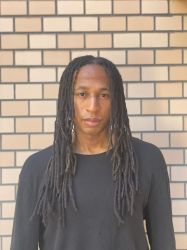
Originally published on metropolis.co.jp on October 2009

Courtesy of FEG Inc
Yuichiro “Jienotsu” Nagashima is a moe otaku. When at home in rural Hyogo Prefecture, he watches anime featuring beautiful girls and surfs the internet for more information about them. He also cosplays as his favorite female characters. You’d think that this guy wearing a schoolgirl uniform would be bullied—that is, until you put some boxing gloves on the New Japan Kick-Boxing Federation’s super welterweight champion.
“My occupation is cosplaying and watching anime,” Nagashima explains to Metropolis. “I consider my appearances in K-1 matches just a way to make money, so once I enter the ring, it’s hobby time to me.”
Nagashima is an otaku who strengthens his body and steps out into society with pride. The mild-mannered 25-year-old says he doesn’t want to be seen as an example for other otaku. He just happens to fight as a hobby and isn’t out to tell people how to live.
Others see progress in otaku with a balanced interest in both the physical and virtual. Toru Honda, an otaku philosopher who advocates a “two-dimensional love revolution” in his book Moeru Otoko (“The Budding Man”), writes that otaku who can balance the physical and emotional are the next stage of human evolution. Punning on the double meaning of moe, he suggests that “moe men” have the potential to both “burn” with masculine physical vitality and “bud” with feminine emotions for characters in anime, manga and video games.
Recent visitors to Akihabara will be familiar with the spectacle of otaku in skirts dancing in public. Similarly, Nagashima says he wears cosplay into the ring to grab the attention of spectators and get them interested in his favorite series and characters.
Not everyone is happy with this “crossplay.” In Akihabara, the police responded by increasing their patrols to curb public disturbance, and thugs thinking otaku had become easy targets started to converge on the area.
An older school of otaku also disapprove. Toshio Okada, 51, an anime producer and critic dubbed the “king of otaku,” is so repulsed by those interested in moe that he declared them to be “culturally dead.”
After otaku hunters, or otaku-gari, took to ganging up on moe men, local hobby enthusiasts started arming themselves. This drew even more negative attention from the police, who began searching the bags of passersby. Otaku are turning to new ways of fighting back, including group shopping and martial arts training.
K-1 and professional wrestling have been a consistent source of inspiration for fanboys, and the fighters themselves are getting increasingly more otaku. Josh Barnett, 32, an MMA fighter from Seattle, is popularly known as the “strongest otaku in the world.” He idolizes the character Kenshiro from ultra-macho series Fist of the North Star and uses its theme tune when he enters the ring.
For his part, Nagashima was inspired by prolific voice actress Megumi Hayashibara. While he isn’t interested in telling anyone how to live, he does have a message for would-be predators.
“I want to say, ‘You think that people who watch anime can’t do anything and are weak, but there are people like me out there. Don’t underestimate us.’ Otaku can be strong.”







